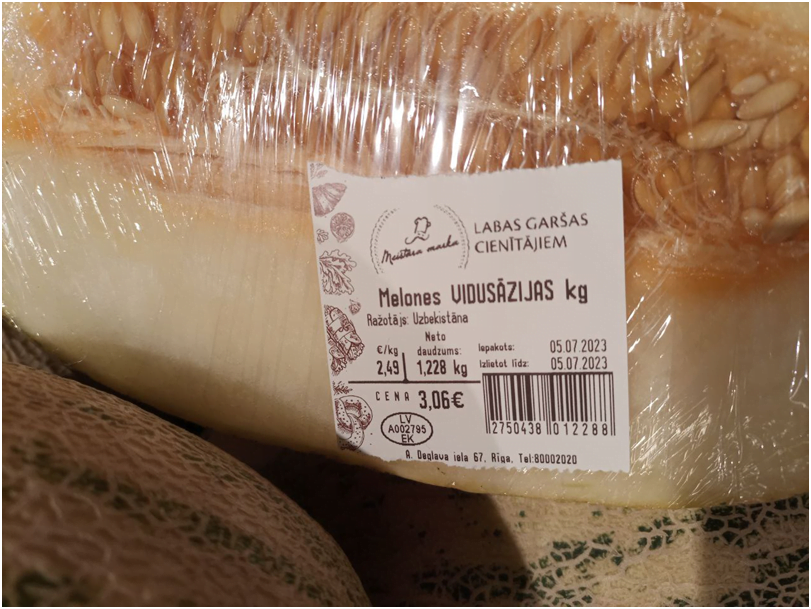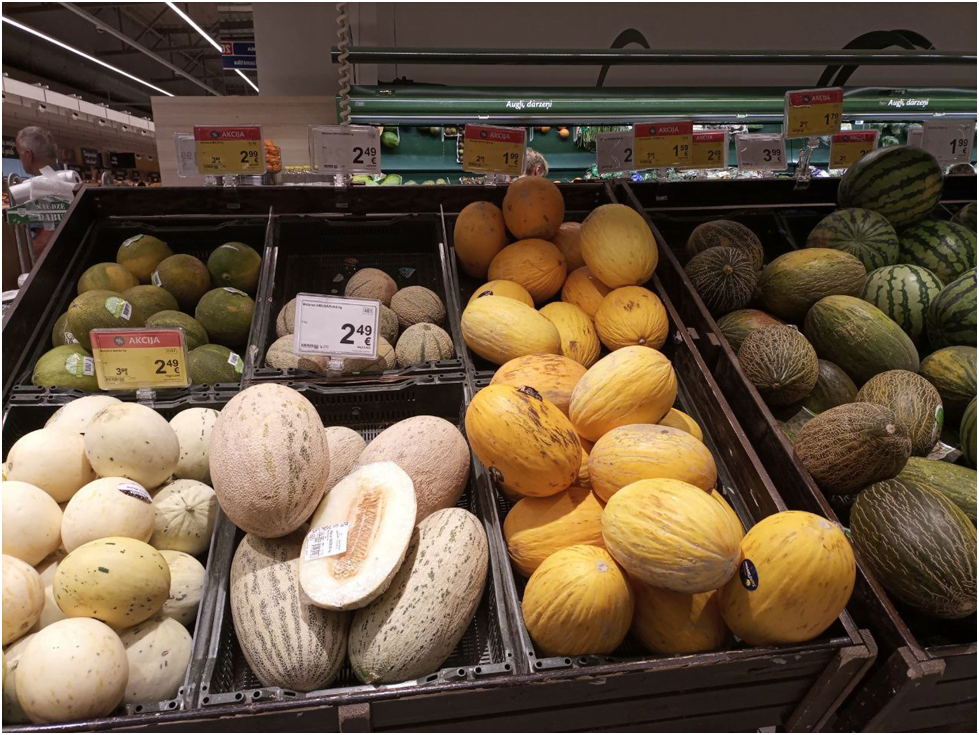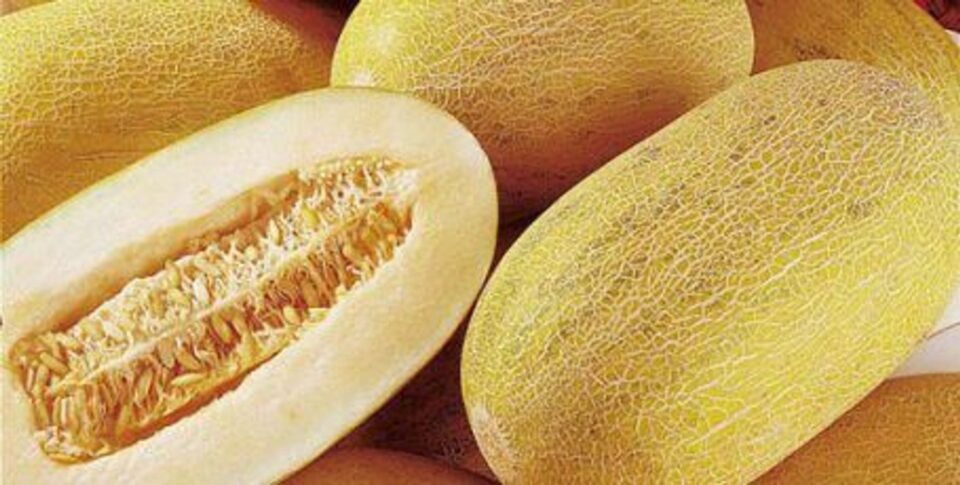According to EastFruit, a melon from Uzbekistan has reappeared in supermarkets in Latvia, which is positioned as the “Central Asian melon”. The retail price for this melon is 2.49 euros per kg. In Uzbekistan, according to EastFruit price monitoring wholesale prices for melons are currently close to 0.4 euro per kg and are expected to start declining sharply soon.

The main problem with Uzbek melons for the supermarkets in the EU countries was its size. Melons in Uzbekistan are usually way too large for the EU consumers. However, this time we can note an improvement in this factor – melons displayed where smaller than usually. However, if you look at how the Uzbek melon looks against the competitors, then it is still larger than the rest of them. Also, as we see in the photo, the Uzbek melon is the only one that was cut into two parts in order to partially solve the problem of large size.

To the left of the Uzbek melon on the picture above is “White Melon”. The country of origin of this melon is not specified and the price for it is 3.99 euros/kg. However, at that moment the store had a promotional price of 2.49 euros/kg. Accordingly, the price was the same as that of the melon from Uzbekistan. Most likely this melon came from Spain.
On the left from the “white melon” there is a new trendy product under the brand “LIMELON”. This is a very interesting melon variety, which the grower positions as a “refreshing melon”. It is claimed that this melon has a taste of lime – hence the name “Lime + melon”. The original price for “Limelon” is 3.99 euros/kg, but it is sold for 2.99 euros/kg under the promotion. Accordingly, this melon is more expensive than the melon from Uzbekistan.
Directly above the Uzbek melons you can see a cantaloupe melon. It is one of the most popular and oldest melon varieties in the world. The price for this melon is 2.49 euro/kg – i.e. this melon costs the same per kilogram as the melon from Uzbekistan.
Nearby are HONEY DEW melons. Since the quality of these melons leaves much to be desired the supermarket is trying to sell it as soon as possible at a promotional price of 1.99 euros/kg.
Most likely, all other melons are also imported from Spain, which is the EU leader in melon segment. However, it is difficult to say for sure as this supermarket for some reason does not report the origin of the product.
Conclusions
We see some progress in the size of melons from Uzbekistan, but it is still the largest fruit on the supermarket shelves. At the same time, the price per kg seems to be average – there are melons that are more expensive, but there are also the cheaper ones.
Why is the large size of the Uzbek melon a big problem for both consumers and supermarkets in the EU?
- Unlike in Uzbekistan, the average family size in the EU countries is smaller, so many will not be able to eat even half of such a big melon.
- A big melon weights more. Accordingly, not everyone is comfortable carrying it home.
- Large melon takes up more space in the bag, so, given the plan of a consumer to buy other products, some will decide not to buy large melon for this very reason.
- Prices for melons are set per kg and they are almost all the same, however, you will have to pay more for a larger melon because it weighs more.
- Having to cut a melon in two is an additional labor cost for a supermarket, and the labor is quite expensive in the EU.
- A cut melon spoils faster, so the food losses will be higher.
- Since large melon (for the reasons mentioned above) is sold slower than other positions, the costs of it to the supermarket is higher, and the margin is, on the contrary, lower, if they are procured at the same price.
The use of the site materials is free if there is a direct and open for search engines hyperlink to a specific publication of the East-Fruit.com website.




